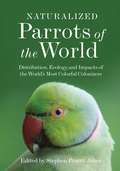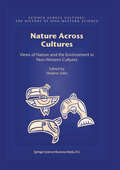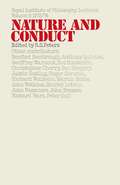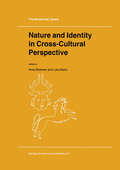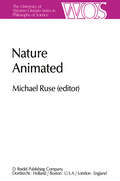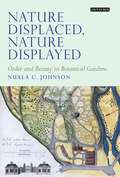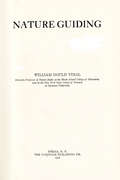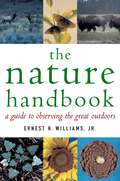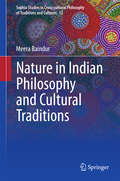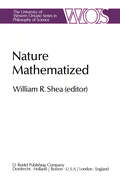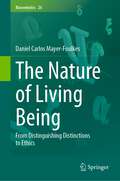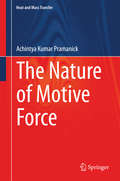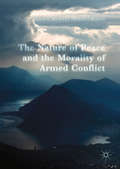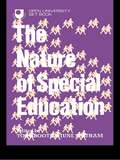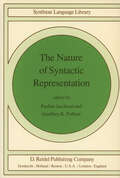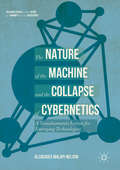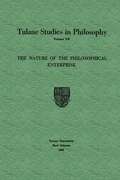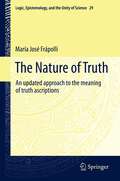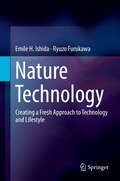- Table View
- List View
Naturalized Parrots of the World: Distribution, Ecology, and Impacts of the World's Most Colorful Colonizers
by Stephen Pruett-JonesA remarkable exploration of naturalized parrots, among the most widely distributed birds in the worldThere are more than 350 species of parrots in the world, and approximately 300 of these species have been transported to other countries through the caged pet trade. Whether through escaped captivity or purposeful release, many of these parrots are now breeding in new habitats. Indeed, no less than 75 species of parrots have established breeding populations in countries where they were introduced, and parrots are now among the most widely distributed group of birds. Naturalized Parrots of the World is the first book to examine this specific avian population.Bringing together the work of leading researchers in one convenient volume, this book explores the biology of naturalized parrots and their interactions with native ecosystems. Experts discuss the global distribution of parrots, their genetics, conservation implications, and human responses to these birds. They also consider debates surrounding management issues and the lack of consensus around nonnative species in the wild. Later chapters feature case studies of the two most successful species—the Rose-ringed Parakeet and Monk Parakeet—as well as studies of the introduced parrot species located in specific countries and regions, including the United States, United Kingdom, Spain, Portugal, northern Europe, South Africa, and Australia.Highlighting critical aspects of conservation biology and biodiversity, Naturalized Parrots of the World will be an invaluable resource for parrot owners, ornithologists, conservation biologists, and birdwatchers.
Naturalized Parrots of the World: Distribution, Ecology, and Impacts of the World's Most Colorful Colonizers
by Stephen Pruett-JonesA remarkable exploration of naturalized parrots, among the most widely distributed birds in the worldThere are more than 350 species of parrots in the world, and approximately 300 of these species have been transported to other countries through the caged pet trade. Whether through escaped captivity or purposeful release, many of these parrots are now breeding in new habitats. Indeed, no less than 75 species of parrots have established breeding populations in countries where they were introduced, and parrots are now among the most widely distributed group of birds. Naturalized Parrots of the World is the first book to examine this specific avian population.Bringing together the work of leading researchers in one convenient volume, this book explores the biology of naturalized parrots and their interactions with native ecosystems. Experts discuss the global distribution of parrots, their genetics, conservation implications, and human responses to these birds. They also consider debates surrounding management issues and the lack of consensus around nonnative species in the wild. Later chapters feature case studies of the two most successful species—the Rose-ringed Parakeet and Monk Parakeet—as well as studies of the introduced parrot species located in specific countries and regions, including the United States, United Kingdom, Spain, Portugal, northern Europe, South Africa, and Australia.Highlighting critical aspects of conservation biology and biodiversity, Naturalized Parrots of the World will be an invaluable resource for parrot owners, ornithologists, conservation biologists, and birdwatchers.
Nature Across Cultures: Views of Nature and the Environment in Non-Western Cultures (Science Across Cultures: The History of Non-Western Science #4)
by HelaineSelinNature Across Cultures: Views of Nature and the Environment in Non-Western Cultures consists of about 25 essays dealing with the environmental knowledge and beliefs of cultures outside of the United States and Europe. In addition to articles surveying Islamic, Chinese, Native American, Aboriginal Australian, Indian, Thai, and Andean views of nature and the environment, among others, the book includes essays on Environmentalism and Images of the Other, Traditional Ecological Knowledge, Worldviews and Ecology, Rethinking the Western/non-Western Divide, and Landscape, Nature, and Culture. The essays address the connections between nature and culture and relate the environmental practices to the cultures which produced them. Each essay contains an extensive bibliography. Because the geographic range is global, the book fills a gap in both environmental history and in cultural studies. It should find a place on the bookshelves of advanced undergraduate students, graduate students, and scholars, as well as in libraries serving those groups.
Nature and Identity in Cross-Cultural Perspective (GeoJournal Library #48)
by Anne Buttimer Luke WallinNature and Identity in Cross-Cultural Perspective presents 20 essays which explore diverse cultural interpretations of the earth's surface. Contrasted with each other and with the potentially cosmopolitan culture of science, these detailed studies of ways in which different cultures conceptualise nature appear in the context of global environmental change. Understanding across cultural lines has never been more important. This book shows how individual cultures see their own histories as offering protection for nature, while often viewing others as lacking such ethical restraints. Through such writing a discourse of understanding and common action becomes possible. The authors come from the places they discuss, and offer passionate as well as scholarly visions of nature within their cultural homes. Audience: This volume is of interest to academics and professionals working in the fields of cultural geography, environmental history, environmental studies, history of environmental ideas, environmental education, landscape and literature, nature and culture. It can be used for courses in the above-mentioned areas and seminars in comparative literature. It can also be used as a complimentary text to provide cultural context to literary readings, and for seminars on cultural aspects of the environment.
Nature Animated: Historical and Philosophical Case Studies in Greek Medicine, Nineteenth-Century and Recent Biology, Psychiatry, and Psychoanalysis/Papers Deriving from the Third International Conference on the History and Philosophy of Science, Montreal, Canada, 1980 Volume II (The Western Ontario Series in Philosophy of Science #21)
by MichaelRuseThese remarks preface two volumes consisting of the proceedings of the Third International Conference on the History and Philosophy of Science of the International Union of History and Philosophy of Science. The conference was held under the auspices of the Union, The Social Sciences and Humanities Research Council of Canada, and the Canadian Society for History and Philosophy of Science. The meetings took place in Montreal, Canada, 25-29 August 1980, with Concordia University as host institution. The program of the conference was arranged by a Joint Commission of the International Union of History and Philosophy of Science consisting of Robert E. Butts (Canada), John Murdoch (U. S. A. ), Vladimir Kirsanov (U. S. S. R. ), and Paul Weingartner (Austria). The Local Arrangements Committee consisted of Stanley G. French, Chair (Concordia), Michel Paradis, treasurer (McGill), Fran~ois Duchesneau (Universite de Montreal), Robert Nadeau (Universite du Quebec it Montreal), and William Shea (McGill University). Both committees are indebted to Dr. G. R. Paterson, then President of the Canadian Society for History and Philosophy of Science, who shared his expertise in many ways. Dr. French and his staff worked diligently and efficiently on behalf of all participants. The city of Montreal was, as always, the subtle mixture of extravagance, charm, warmth and excitement that retains her status as the jewel of Canadian cities. The funding of major international conferences is always a problem.
Nature Displaced, Nature Displayed: Order and Beauty in Botanical Gardens (Tauris Historical Geographical Series)
by Nuala C. JohnsonBotanical gardens brought together in a single space the great diversity of the earth's flora. They displaced nature from forest and foothill and re-arranged it to reveal something of the scientific principles underpinning the apparent chaos of the wild. Nature Displaced, Nature Displayed shows how the design and display of such gardens was not determined by scientific principles alone. Through a study of three botanical gardens - belonging to the University of Cambridge, the Royal Dublin Society, and the Belfast Natural History Society - the author shows how the final outcome involved a complex interplay of ideas about place, identity, empire, botanical science, and especially aesthetics, creating spaces that would educate the mind as well as please the senses. This highly engaging book offers a wealth of fresh insights into both the history and development of botanical gardens as well as connections between science and aesthetics. 'Nuala Johnson's masterful ethnography of three sites where the canons of science and aesthetics are refracted and blurred demonstrates why a geographical imagination matters. This is comparative history at its best.'James S. Duncan, University of Cambridge
Nature Guiding
by William Gould VinalNature Guiding is the science of inculcating nature enthusiasm, nature principles, and nature facts into the spirit of individuals. "Doing" nature-study means observing, wondering, and solving problems. It could include collecting, building, measuring, painting, planning, writing, touching, experimenting or any of a wide range of other activities. Most importantly, it allows children to be "original investigators."This book is intended as a resource for teachers and students engaged in nature study at summer camps and in schools. William Gould Vinal believed that the teacher of nature study should be "in sympathy with the simple life and the country way," that the nature study should emphasize observation of the interactions of plants and animals in their environment, and not be reduced to matters of taxonomy and anatomy. In Nature Guiding, he offers advice to camp counselors and school teachers on incorporating nature study into everyday activities, as well as suggestions for parents and others about using visits to state and national parks to teach nature lore.
The Nature Handbook: A Guide to Observing the Great Outdoors
by Ernest H. WilliamsNature is full of fascinating stories, stories that attract our attention at a young age and keep us amazed throughout our entire lives. The need to understand nature draws us back to its simple beauty again and again, yet underneath this simplicity lies a complex web of associations and patterns. The Nature Handbook does what no other field guide does: explores and explains nature through these connecting patterns, revealing them to the many different types of nature lovers. All naturalists-- from birders to gardeners, hikers to environmentalists, wildflower enthusiasts to butterfliers-- will appreciate the different approach of the Handbook, even those whose interest in the natural world is just beginning to develop. Naturalists who are already well versed in one group of organisms--birders, for example--will find new explanations and patterns for their favorite group, as well as new patterns all around them that they had previously overlooked. Observations in the Handbook are arranged in the three main sections of plants, animals, and habitats. These sections are then connected through discussions of the relationship of size and shape, adaptations, distribution patterns, behavior, and diversity of life. Since the emphasis is on patterns rather than individual species, each chapter has cross-references to related topics. For example, tree-related topics such as leaf shape, treelines, and fall colors, are all discussed in different chapters even though they are related. Leaf shape is associated with trees as organisms, and therefore is in Chapter 2: Trees; treelines are most associated with mountains, so their description is in Chapter 8: Mountains; fall colors apply more broadly to forests than to individual trees, and they are discussed in Chapter 9,Forests. Approximately 500 color photographs help make the more than 200 patterns apparent and recognizable for readers, and each pattern is accompanied by a detailed description and a brief list of sources. The book is designed to invite browsing, and readers will gain a rich ecological perspective and insight. Curiosity about the world around us is a basis for human learning; The Nature Handbook serves to aid all nature lovers in their quest for understanding the many stories that our living world provides.
The Nature Handbook: A Guide to Observing the Great Outdoors
by Ernest H. WilliamsNature is full of fascinating stories, stories that attract our attention at a young age and keep us amazed throughout our entire lives. The need to understand nature draws us back to its simple beauty again and again, yet underneath this simplicity lies a complex web of associations and patterns. The Nature Handbook does what no other field guide does: explores and explains nature through these connecting patterns, revealing them to the many different types of nature lovers. All naturalists-- from birders to gardeners, hikers to environmentalists, wildflower enthusiasts to butterfliers-- will appreciate the different approach of the Handbook, even those whose interest in the natural world is just beginning to develop. Naturalists who are already well versed in one group of organisms--birders, for example--will find new explanations and patterns for their favorite group, as well as new patterns all around them that they had previously overlooked. Observations in the Handbook are arranged in the three main sections of plants, animals, and habitats. These sections are then connected through discussions of the relationship of size and shape, adaptations, distribution patterns, behavior, and diversity of life. Since the emphasis is on patterns rather than individual species, each chapter has cross-references to related topics. For example, tree-related topics such as leaf shape, treelines, and fall colors, are all discussed in different chapters even though they are related. Leaf shape is associated with trees as organisms, and therefore is in Chapter 2: Trees; treelines are most associated with mountains, so their description is in Chapter 8: Mountains; fall colors apply more broadly to forests than to individual trees, and they are discussed in Chapter 9,Forests. Approximately 500 color photographs help make the more than 200 patterns apparent and recognizable for readers, and each pattern is accompanied by a detailed description and a brief list of sources. The book is designed to invite browsing, and readers will gain a rich ecological perspective and insight. Curiosity about the world around us is a basis for human learning; The Nature Handbook serves to aid all nature lovers in their quest for understanding the many stories that our living world provides.
Nature in Indian Philosophy and Cultural Traditions (Sophia Studies in Cross-cultural Philosophy of Traditions and Cultures #12)
by Meera BaindurWorking within a framework of environmental philosophy and environmental ethics, this book describes and postulates alternative understandings of nature in Indian traditions of thought, particularly philosophy. The interest in alternative conceptualizations of nature has gained significance after many thinkers pointed out that attitudes to the environment are determined to a large extent by our presuppositions of nature. This book is particularly timely from that perspective.It begins with a brief description of the concept of nature and a history of the idea of nature in Western thought. This provides readers with a context to the issues around the concept of nature in environmental philosophy, setting a foundation for further discussion about alternate conceptualizations of nature and their significance. In particular, the work covers a wide array of textual and non-textual sources to link and understand nature from classical Indian philosophical perspectives as well as popular understandings in Indian literary texts and cultural practices. Popular issues in environmental philosophy are discussed in detail, such as: What is ‘nature’ in Indian philosophy? How do people perceive nature through landscape and mythological and cultural narratives? In what ways is nature sacred in India?To make the discussion relevant to contemporary readers, the book includes a section on the ecological and ethical implications of some philosophical concepts and critical perspectives on alternate conceptualizations of nature.
Nature Mathematized: Historical and Philosophical Case Studies in Classical Modern Natural Philosophy (The Western Ontario Series in Philosophy of Science #20)
by William R. SheaThese remarks preface two volumes consisting of the proceedings of the Third International Conference on the History and Philosophy of Science of the International Union of History and Philosophy of Science. The conference was held under the auspices of the Union, The Social Sciences and Humanities Research Council of Canada, and the Canadian Society for History and Philosophy of Science. The meetings took place in Montreal, Canada, 25--29 August 1980, with Concordia University as host institution. The program of the conference was arranged by a Joint Commission of the International Union of History and Philosophy of Science consisting of Robert E. Butts (Canada), John Murdoch (U. S. A. ), Vladimir Kirsanov (U. S. S. R. ), and Paul Weingartner (Austria). The Local Arrangements Committee consisted of Stanley G. French, Chair (Concordia), Michel Paradis, treasurer (McGill), Franyois Duchesneau (Universite de Montreal), Robert Nadeau (Universite du Quebec a Montreal), and William Shea (McGill University). Both committees are indebted to Dr. G. R. Paterson, then President of the Canadian Society for History and Philosophy of Science, who shared his expertise in many ways. Dr. French and his staff worked diligently and efficiently on behalf of all participants. The city of Montreal was, as always, the subtle mixture of extravagance, charm, warmth and excitement that retains her status as the jewel of Canadian cities. The funding of major international conferences is always a problem.
The Nature of Living Being: From Distinguishing Distinctions to Ethics (Biosemiotics #26)
by Daniel Carlos Mayer-FoulkesThis book proposes a bold idea. Living beings are distinguishing distinctions. Single cells and multicellular organisms maintain themselves distinct by drawing distinctions. This is what organisms are and what they do. From this starting point, key issues examined range across ontology, epistemology, phenomenology, logic, and ethics. Topics discussed include the origin of life, the nature and purpose of biology, the relation between life and logic, the nature and limits of formal logic, the nature of subjects, the subject-object relation, subject-subject relationships and the deep roots of ethics. The book provides a radical new foundation to think about philosophy and biology and appeals to researchers and students in these fields. It powerfully debunks mechanical thinking about living beings and shows the vast reservoir of insights into aliveness available in the arts and humanities.
The Nature of Motive Force (Heat and Mass Transfer)
by Achintya Kumar PramanickIn this monograph Prof. Pramanick explicates the law of motive force, a fundamental law of nature that can be observed and appreciated as an addition to the existing laws of thermodynamics. This unmistakable and remarkable tendency of nature is equally applicable to all other branches of studies. He first conceptualized the law of motive force in 1989, when he was an undergraduate student. Here he reports various applications of the law in the area of thermodynamics, heat transfer, fluid mechanics and solid mechanics, and shows how it is possible to solve analytically century-old unsolved problems through its application. This book offers a comprehensive account of the law and its relation to other laws and principles, such as the generalized conservation principle, variational formulation, Fermat’s principle, Bejan’s constructal law, entropy generation minimization, Bejan’s method of intersecting asymptotes and equipartition principle. Furthermore, the author addresses some interrelated fundamental problems of contemporary interest, especially to thermodynamicists, by combining analytical methods, physical reasoning and the proposed law of motive force. This foundational work is a valuable reading for both students and researchers in exact as well as non-exact sciences and, at the same time, a pleasant learning experience for the novice.
The Nature of Peace and the Morality of Armed Conflict
by Florian Demont-BiaggiThis book explores topical issues in military ethics by according peace a central role within an interdisciplinary framework. Whilst war and peace have traditionally been viewed through the lens of philosophical enquiry, political issues and theological ideas - as well as common sense - have also influenced people’s understanding of armed conflicts with regards to both the moral issues they raise and the policies and actions they require. Comprised of fourteen essays on the role and application of peace, the book places emphasis on it’s philosophical, moral, theological, technological, and practical implications. Starting with an overview of Kantian perspectives on peace, it moves to discussions of the Just War debates, religious conceptualizations of peace, and the role of peace in modern war technology and cyber-security. Finally concluding with discussions of the psychological and medical impacts of war and peace on both the individual and the larger society, this collection offers a contribution to the field and will be of interest to a wide audience.Chapters 4, 6 and 10 of this book are available open access under a CC BY 4.0 license at link.springer.com.
The Nature of Peace and the Morality of Armed Conflict
by Florian Demont-BiaggiThis book explores topical issues in military ethics by according peace a central role within an interdisciplinary framework. Whilst war and peace have traditionally been viewed through the lens of philosophical enquiry, political issues and theological ideas - as well as common sense - have also influenced people’s understanding of armed conflicts with regards to both the moral issues they raise and the policies and actions they require. Comprised of fourteen essays on the role and application of peace, the book places emphasis on it’s philosophical, moral, theological, technological, and practical implications. Starting with an overview of Kantian perspectives on peace, it moves to discussions of the Just War debates, religious conceptualizations of peace, and the role of peace in modern war technology and cyber-security. Finally concluding with discussions of the psychological and medical impacts of war and peace on both the individual and the larger society, this collection offers a contribution to the field and will be of interest to a wide audience.Chapters 4, 6 and 10 of this book are available open access under a CC BY 4.0 license at link.springer.com.
The Nature of Special Education
by Tony Booth June StathamFirst published in 1981. Routledge is an imprint of Taylor & Francis, an informa company.
The Nature of Special Education: People, Places And Change (Open University Set Book Ser.)
by Tony Booth & June StathamFirst published in 1981. Routledge is an imprint of Taylor & Francis, an informa company.
The Nature of Syntactic Representation (Studies in Linguistics and Philosophy #15)
by Pauline Jacobson G. K. PullumThe work collected in this book represents the results of some intensive recent work on the syntax of natural languages. The authors' differing viewpoints have in common the program of revising current conceptions of syntactic representation so that the role of transformational derivations is reduced or eliminated. The fact that the papers cross-refer to each other a good deal, and that authors assuming quite different fram{:works are aware of each other's results and address themselves to shared problems, is partly the result of a conference on the nature of syntactic representation that was held at Brown University in May 1979 with the express purpose of bringing together different lines of research in syntax. The papers in this volume mostly arise out of work that was presented in preliminary form at that conference, though much rewriting and further research has been done in the interim period. Two papers are included because although they were not given even in preliminary form at the conference, it has become clear since then that they interrelate with the work of the conference so much that they cannot reasonably be left out: Gerald Gazdar's statement of his program for phrase structure description of natural language forms the theoretical basis that is assumed by Maling and Zaenen and by Sag, and David Dowty's paper represents a bridge between the relational grammar exemplified here in the papers by Perlmutter and Postal on the one hand and the Montague
The Nature of the Machine and the Collapse of Cybernetics: A Transhumanist Lesson for Emerging Technologies
by Alcibiades Malapi-NelsonThis book is a philosophical exploration of the theoretical causes behind the collapse of classical cybernetics, as well as the lesson that this episode can provide to current emergent technologies. Alcibiades Malapi-Nelson advances the idea that the cybernetic understanding of the nature of a machine entails ontological and epistemological consequences that created both material and theoretical conundrums. However, he proposes that given our current state of materials research, scientific practices, and research tools, there might be a way for cybernetics to flourish this time. The book starts with a historical and theoretical articulation of cybernetics in order to proceed with a philosophical explanation of its collapse—emphasizing the work of Alan Turing, Ross Ashby and John von Neumann. Subsequently, Malapi-Nelson unveils the common metaphysical signature shared between cybernetics and emergent technologies, identifying this signature as transhumanist in nature. Finally, avenues of research that may allow these disruptive technologies to circumvent the cybernetic fate are indicated. It is proposed that emerging technologies ultimately entail an affirmation of humanity.
The Nature of the Machine and the Collapse of Cybernetics: A Transhumanist Lesson for Emerging Technologies
by Alcibiades Malapi-NelsonThis book is a philosophical exploration of the theoretical causes behind the collapse of classical cybernetics, as well as the lesson that this episode can provide to current emergent technologies. Alcibiades Malapi-Nelson advances the idea that the cybernetic understanding of the nature of a machine entails ontological and epistemological consequences that created both material and theoretical conundrums. However, he proposes that given our current state of materials research, scientific practices, and research tools, there might be a way for cybernetics to flourish this time. The book starts with a historical and theoretical articulation of cybernetics in order to proceed with a philosophical explanation of its collapse—emphasizing the work of Alan Turing, Ross Ashby and John von Neumann. Subsequently, Malapi-Nelson unveils the common metaphysical signature shared between cybernetics and emergent technologies, identifying this signature as transhumanist in nature. Finally, avenues of research that may allow these disruptive technologies to circumvent the cybernetic fate are indicated. It is proposed that emerging technologies ultimately entail an affirmation of humanity.
The Nature of the Philosophical Enterprise (Tulane Studies in Philosophy #7)
by Edward G. Ballard Richard L. Barber James K. Feibleman Harold N. Lee Paul Guerrant Morrison Andrew J. Reck Louise Nisbet Roberts Robert C. WhittemoreThe Nature of Truth: An updated approach to the meaning of truth ascriptions (Logic, Epistemology, and the Unity of Science #29)
by Maria Jose FrapolliThe book offers a characterization of the meaning and role of the notion of truth in natural languages and an explanation of why, in spite of the big amount of proposals about truth, this task has proved to be resistant to the different analyses. The general thesis of the book is that defining truth is perfectly possible and that the average educated philosopher of language has the tools to do it. The book offers an updated treatment of the meaning of truth ascriptions from taking into account the latest views in philosophy of language and linguistics.
Nature Technology: Creating a Fresh Approach to Technology and Lifestyle
by Emile H. Ishida Ryuzo FurukawaThe Great East Japan Earthquake, which occurred on March 11, 2011, reminded us that we were just one species within the great cycle of life on earth, that we were allowed to survive only because of nature, and that the idea that we were somehow able to conquer nature was simply an illusion. Now more than ever it is time that we confront head-on the change from the "underground resources" type of civilization to one with a new way of life and technology that embraces a sense of nature. To do so, we must learn from nature, the only sustainable society on earth, and create technology that embraces such a view of nature. We call such technology, which cleverly revives nature's greatness, Nature Technology. Taking a casual glance at nature, a nest of termites in the savanna region can be observed to maintain a steady temperature of 30°C despite the fact that the outside air temperature ranges from 50°C during the day to nearly 0°C at night. There are countless numbers of open pores just several billionths of a meter (nanometer) wide in the "earth" of the nest, which serve to regulate the temperature and humidity. In fact, all kinds of "earth" have these pores (clay mineral with aggregated structures) and air conditioners that require no electricity have been created by hardening this earth while preserving its structure; a cooling floor or wall becomes the alternative to a conventional air conditioner. This book provides many such examples of how Nature Technology can support a new lifestyle that is both environmentally sound and spiritually uplifting.
Nature, Value, Duty: Life on Earth with Holmes Rolston, III (The International Library of Environmental, Agricultural and Food Ethics #8)
by Christopher J. Preston Wayne OuderkirkThis is a collection of contemporary writings on the work of Holmes Rolston, III. The authors contributing to this volume are a mixture of senior scholars in environmental ethics and new voices in philosophy and in literature. Together they provide an in depth evaluation of many of the topics discussed by Rolston. Rolston himself, in a detailed reply to each of his critics at the end of the volume, reveals where some of these criticisms sting him the most.
